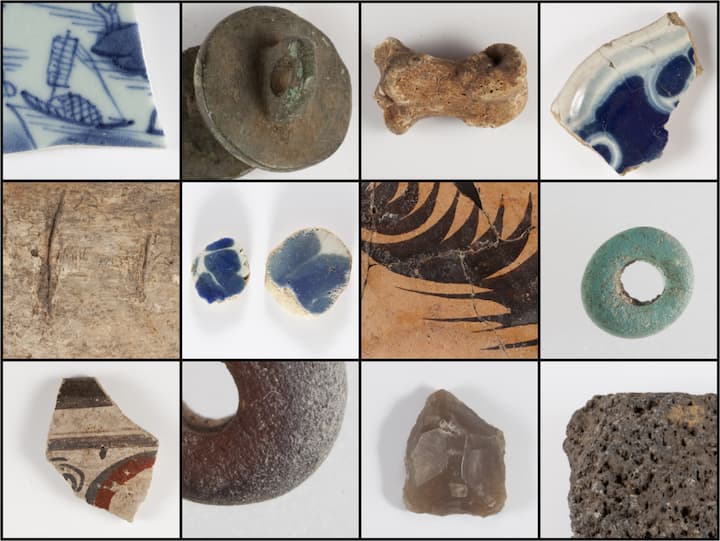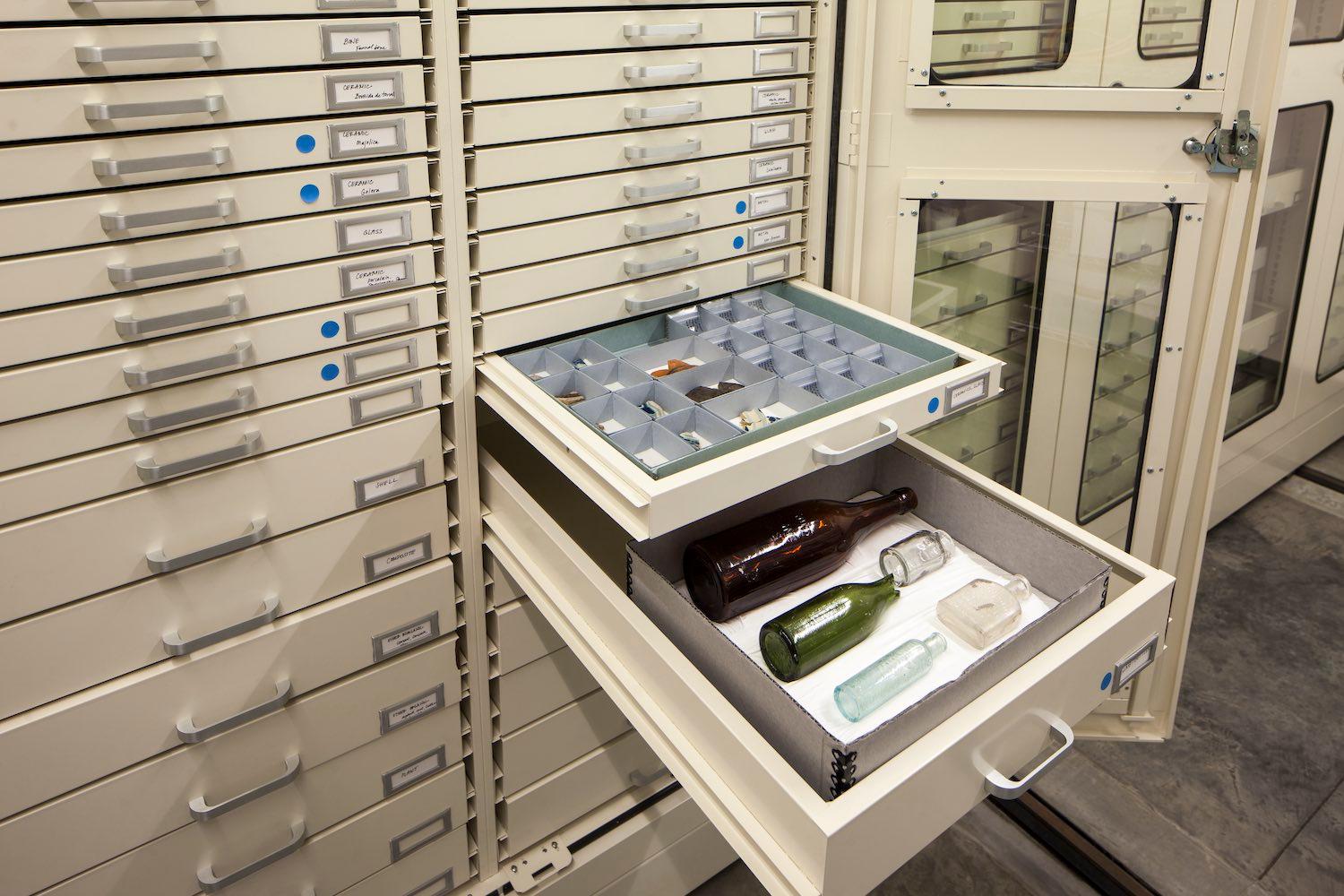Curation
The Presidio Trust curation program stewards and shares the park’s extensive collections.
The collections include more than one million objects and associated records from multiple eras of the Presidio’s history. Public exhibitions at the Presidio Officers’ Club and at the Presidio Archaeology Lab and Curation Facility next door highlight the collections.
The exhibitions explore the Presidio’s role in shaping and serving the nation. They invite the public to consider how this history is relevant today through participatory, co-created experiences.
About the Presidio Trust Collections
The Presidio Trust’s collections represent many cultural periods in California’s history, with more than one million objects and associated records representing Native Californian, Spanish Colonial, Mexican Republican, and United States Army eras.
Most notably, they include one of the largest collections of Spanish Colonial- and Mexican Republican-era archaeological artifacts and associated records in California, documenting architecture, foodways, trade, domestic life, indigenous-colonial encounters, and other features of daily life at El Presidio de San Francisco.

The collections are created during resource management activities that are part of the management of the National Historic Landmark District. The Presidio Trust maintains and manages its collections in accordance with federal regulations and agency policy.
Collections are on display in the exhibitions at the Presidio Officers’ Club and at the Presidio Archaeology Lab and Curation Facility next door. Elsewhere, Presidio collections can be viewed at the San Francisco Maritime National Historic Park Visitor Center in San Francisco, as part of the Women Inspire exhibition at the California Museum in Sacramento, and online at San Francisco State University’s Presidio Project: A Look at the Lives of Enlisted Soldiers at the Presidio of San Francisco.
Free History Exhibitions
Free to all, the Presidio Officers’ Club exhibitions tracing the Presidio’s past and present are to the public. Check the website for current hours.
Research and Public Inquiries
As collections stewards, it is our mission to provide information about and access to the collections we hold in public trust. People with questions about collections or exhibitions for research, loans, donations, or other purposes may contact Presidio Trust curation staff at curation@presidiotrust.gov.
Those interested in accessing the collections should first familiarize themselves with the agency’s collections policies:
Additional resources:
- 36 CFR Part 79, Curation of Federally-Owned and Administered Archaeological Collections
- Archaeology at the Presidio
- Preservation at the Presidio
- Additional Research Resources
- Presidio Trust NHPA Annual Reports
- Presidio Trust Art Policy
- NPS Golden Gate National Recreation Area Museum Program
- NPS Golden Gate National Recreation Area Cultural Resource Publications
Highlights From the Collections
Gaming Pieces
These disks were made from fragments of Puebla-style majolica vessels, smoothed into circular shapes. Similar artifacts have also been found elsewhere at other presidios; they are most commonly interpreted by archaeologists as gaming pieces. Can you imagine what kind of games were played by people living at El Presidio?
Bruñida de Tonalá
This earthenware ceramic, also known as losa de olor (fragrant pottery), has been produced in the Mexican town of Tonalá since the early 1600s. Its distinctive surface decoration is created through a combination of special clay slip that is applied to the body and then burnished bruñida. These fragments are probably from a vessel that was used for storing and pouring liquids.
Chinese Export Porcelain
Look closely and you can identify trees and a boat on water in the decoration on this fragment of Chinese export porcelain. This class of Chinese-produced ceramics is called export porcelain because it was produced specifically for overseas markets rather than for local use in China. Along with spices and other products from Asia, these ceramics were brought to New Spain by the Manila galleon trade.
Grizzly Bear Specimen
This is a single bone from the paw of a grizzly bear, Ursus arctos. Although no longer present in California, grizzlies were abundant on the San Francisco peninsula during the Spanish-colonial era. This large predator may have been killed in defense or for sport, but early colonizers also relied on the grizzly for fur and, perhaps surprisingly, meat.
Miníe Ball
First popularized by French military officers in the 1850s, the Miníe ball outperformed round shot when used in rifles. Technological advancements included the conical shape, a hollow base where gunpowder was loaded, and grooves that expanded upon firing to fit rifling more effectively. Widespread adoption of Miníe technology by the United States Army during the Civil War was responsible for many severe casualties; not only was the Miníe more accurate than its predecessors, but its large caliber easily shattered limbs.
Soda Water Bottle
The initials “CM” visible inside the Maltese cross stand for Charles Matthews & Brothers, proprietors of Standard Soda Water Works at 1474 Valencia Street in San Francisco’s Mission District. In a report to the second session of the 53rd Congress in 1893-94, the company was producing “about $30,000 worth of soda waters, ginger ales, and all kinds of nonalcoholic drinks” annually.
Toy Car
This incredibly detailed toy car is made of die-cast metal using a system called “slush molding” where part of the molding is left open. It was manufactured by the Barclay company in West Hoboken New Jersey sometime between 1923 and 1930 and its wheels still roll! Is this the kind of thing you would expect a soldier to have?
Contact Us
If you have a question about the Presidio Trust’s curation program, contact us at curation@presidiotrust.gov.
